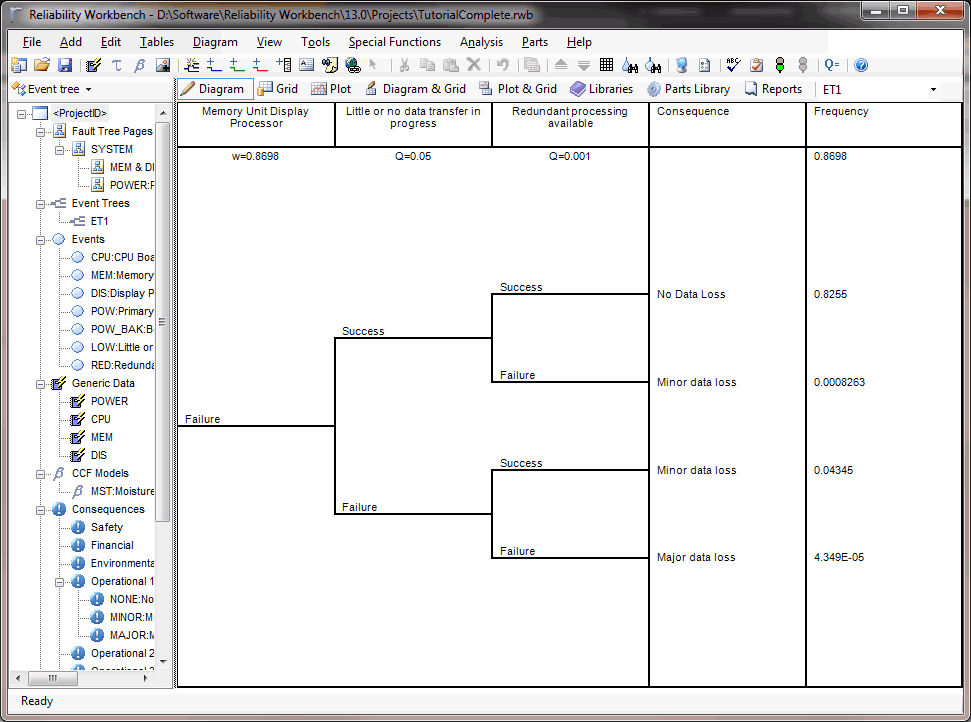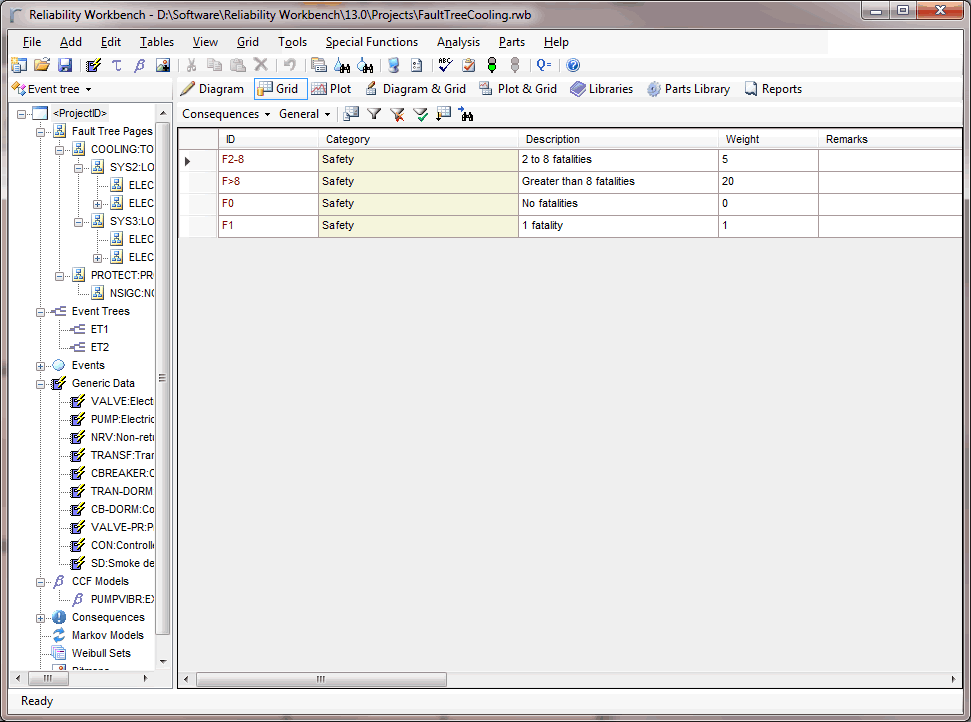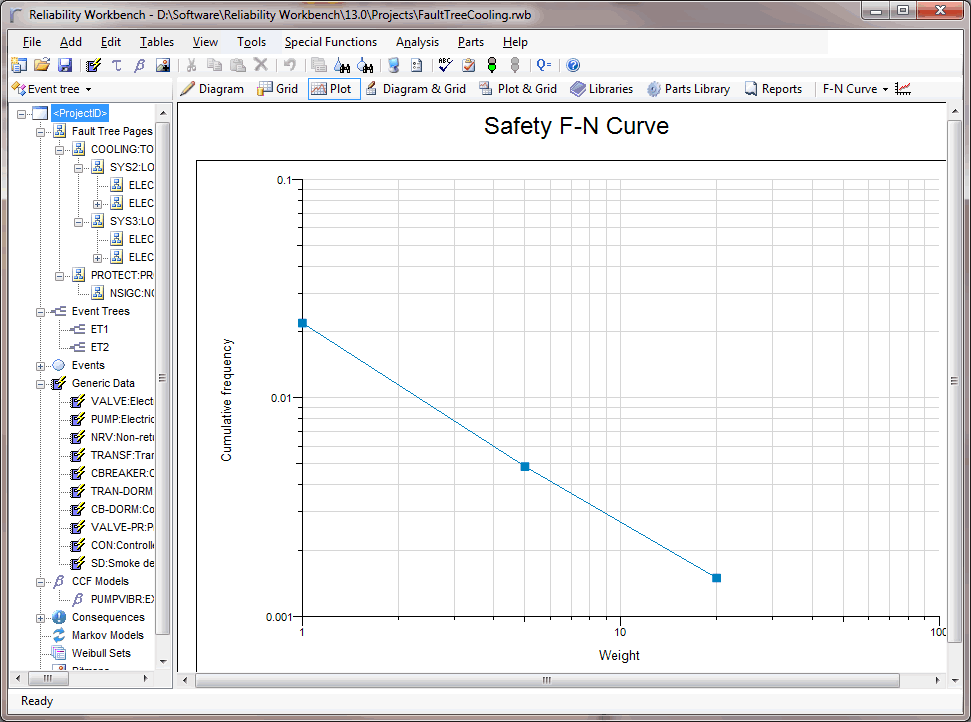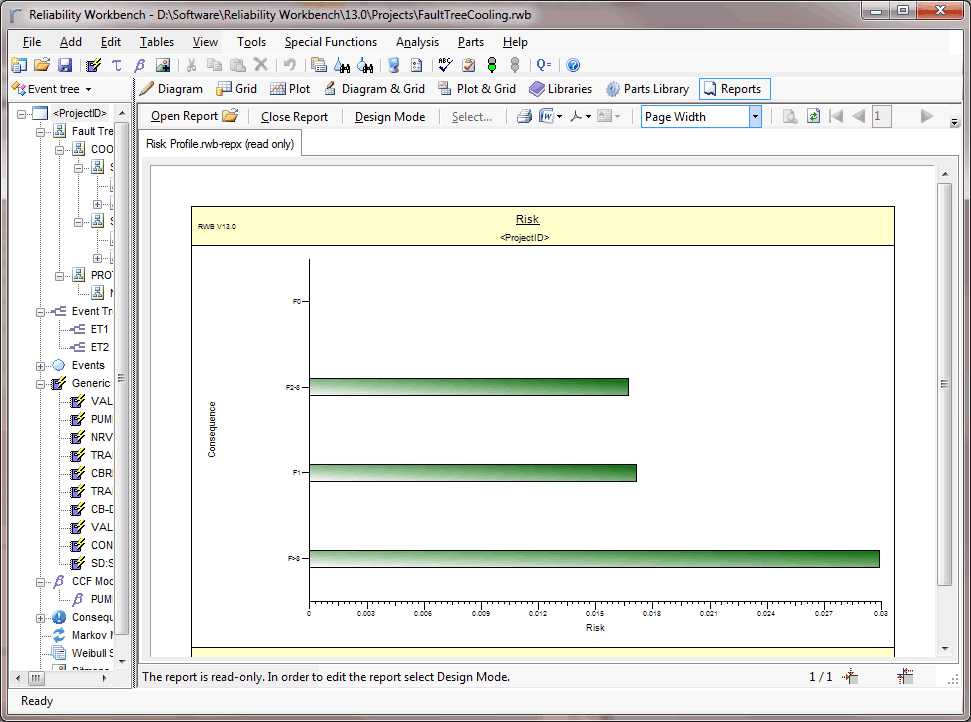The FaultTree+ module in Reliability Workbench comes with an event tree analysis module that is unique in its ability to handle large scale problems and to fully handle success logic. The event tree model may be created independently of the fault tree model or may use fault tree analysis gate results as the source of event tree probabilities.
The event tree module handles both primary and secondary event trees, multiple branches and multiple consequence categories.
Event Tree Construction Features
- Primary and secondary event trees
- Multiple branching supported for event trees
- Multiple consequence categories for event trees
- Pruning of event trees
- Insert new columns retaining existing data
- Copy and paste event trees
- Descriptive text labels and bitmap images may be placed anywhere on an event tree page
- Font selection for names, descriptions and labels
- Undo and automatic backup facilities
Event Tree Analysis Features
- Full minimal cut set analysis. Success states are fully handled.
- Range of event failure and repair models including fixed rates, dormant, sequential, standby, time at risk, binomial, Poisson and initiator failure models
- Basic events may be linked to Markov models created in the Markov analysis module
- Comprehensive risk calculation
- Risk importance analysis identifying the major contributors to risk
- Sensitivity analysis allowing the automatic variation of event failure and repair data between specified limits



